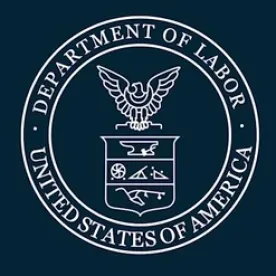On October 8, 2020, the U.S. Department of Labor (DOL) published the “Strengthening Wage Protections for the Temporary and Permanent Employment of Certain Aliens in the United States” interim final rule, amending the existing four-tier wage structure governing the calculation of prevailing wage levels.
The new regulation significantly increases the wage levels of the Occupational Employment Statistics (OES) wage survey across all occupations. It affects H-1B (Specialty Occupation), H-1B1 (Free Trade Agreement Workers in a Specialty Occupation from Chile and Singapore) and E-3 (Specialty Occupation Workers from Australia) employment-based nonimmigrant petitions, as well as permanent labor certification program (“PERM”) applications. The interim final rule took effect immediately upon publication on October 8. Labor Condition Applications (LCAs) filed on or after October 8 and PERM prevailing wage determinations (PWDs) issued on or after October 8 are subject to the new wage structure. However, the DOL will not apply the new rule to any previously approved PWDs, PERMs, or LCAs.
Normally, U.S. employers seeking to hire foreign nationals in specialty occupation nonimmigrant classifications (i.e., H-1B, H-1B1, and E-3) or sponsor foreign nationals for PERMs must commit to paying foreign nationals the prevailing wage for the specific occupation, level, and metropolitan statistical area in which they will be employed. As part of H-1B, H-1B1, and E-3 visa nonimmigrant petitions, U.S. employers must obtain a certified LCA from the DOL. Similarly, U.S. employers sponsoring foreign nationals for PERMs are required to secure PWDs from the DOL.
Under the new interim final rule, U.S. employers that rely on these LCAs and PWDs are experiencing immediate and dramatic increases to the required wages they must pay to foreign national beneficiaries of H-1B, H-1B1, E-3 nonimmigrant visa petitions and PERM applications. Specifically, the DOL’s interim final rule increases prevailing wages by changing their computation under the existing four-tier wage structure as follows:
-
Level I Wage (entry):wage level increased from the 17th percentile to the 45th percentile.The new Level I wage will be established by a calculation of the prevailing wage for entry-level foreign national workers who have “comparable levels of education, experience, and responsibility to the foreign workers in [the H-1B, H-1B1, E-3, and PERM] programs.”
-
Level II Wage (qualified):wage level increased from the 34th percentile to the 62nd percentile.The Level II wage “will continue to be calculated in accordance” with the existing formula for establishing intermediate wage levels.Due to the change in calculation for Level I and Level IV, this results in an adjustment of the Level II wage to approximately the 62nd percentile of the OES wage distribution.
-
Level III Wage (experienced): wage level increased from the 50th percentile to the 78th percentile.The Level III wage “will continue to be calculated in accordance” with the existing formula for establishing intermediate wage levels.Due to the change in calculation for Level I and Level IV, this results in an adjustment of the Level III wage to approximately the 78th percentile of the OES wage distribution.
-
Level IV Wage (competent): wage level increased from the 67th percentile to 95th percentile.The DOL will calculate the new Level IV wage “by taking the arithmetic mean of the wages paid to the most highly paid workers in the OES distribution.”
U.S. employers should note that the interim final rule does not prevent them from using an alternative wage survey. Pursuant to 20 CFR §656.40(g), U.S. employers can use an “independent authoritative source” or “another legitimate source of wage information” to determine the applicable prevailing wage in both LCAs and PWDs applications. The Office of Foreign Labor Certification (OFLC) has provided employers and legal practitioners with additional guidance regarding requirements for alternative wage surveys. Accordingly, U.S. employers may consider using alternative wage surveys (i.e., private salary surveys) that meet the regulatory standards and OFLC guidelines, rather than following the OES wage survey.
Notwithstanding the significant disruption stemming from the interim final rule, the future of this new regulation is uncertain. Institutions of higher education, the U.S. Chamber of Commerce, and U.S. businesses have filed federal lawsuits seeking to vacate and enjoin the DOL from enforcing the interim final rule, contending that it did not comply with the procedural guidance for federal rulemaking.
Traditionally, a new federal regulation is required to go through the notice of proposed rulemaking process, which entails the publishing of a proposed rule followed by a comment period. After the comment period is closed and comments are reviewed, U.S. federal agencies can then publish a final rule. In contrast, the DOL published the interim final rule, which became immediately effective, without the agency first evaluating and responding to public comments.
U.S. federal agencies can only deviate from the normal rulemaking process provided it is “impracticable, unnecessary, or contrary to the public interest.” If the preliminary injunctions sought by U.S. employers are successful, they could block DOL from enforcing the rule while legal challenges are litigated in federal court. Federal courts then may order the DOL to vacate and set aside the interim final rule, thereby relieving U.S. employers from the significant financial burden imposed by the new wage regulation.
Unless and until such court rulings are issued, however, employers should ensure they are complying with the amended wage structure governing the calculation of prevailing wage levels.




 />i
/>i

